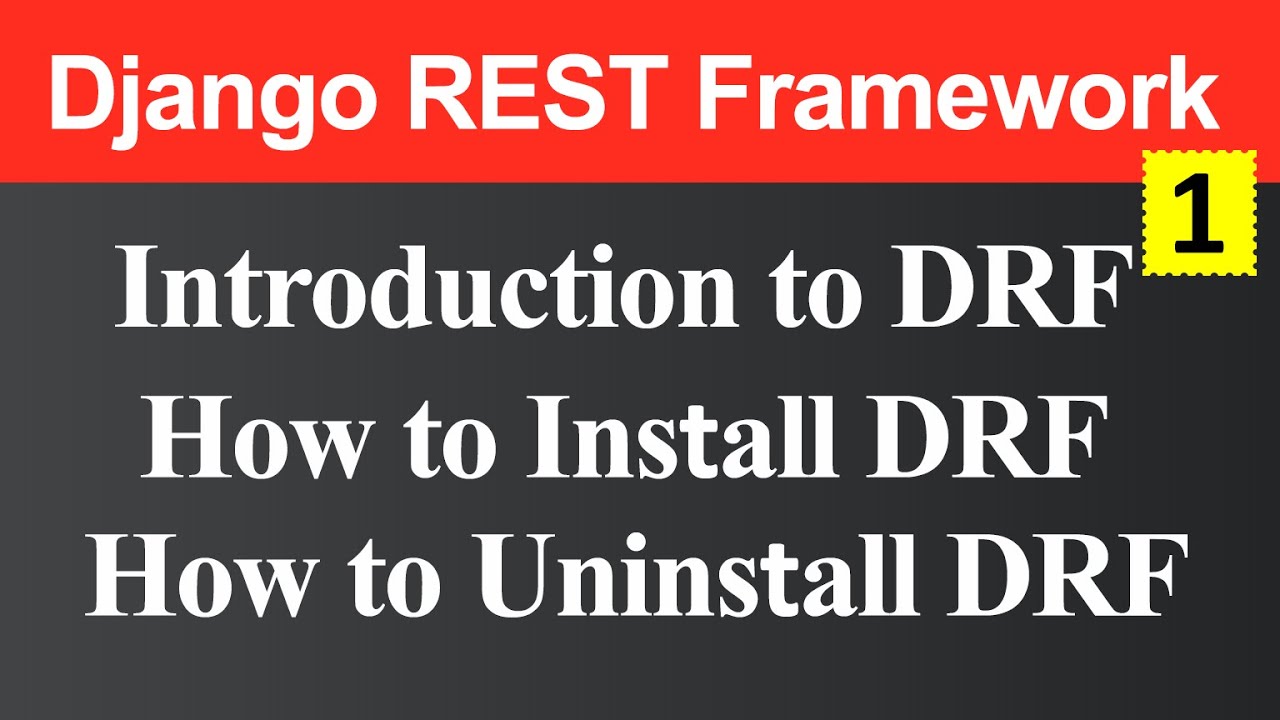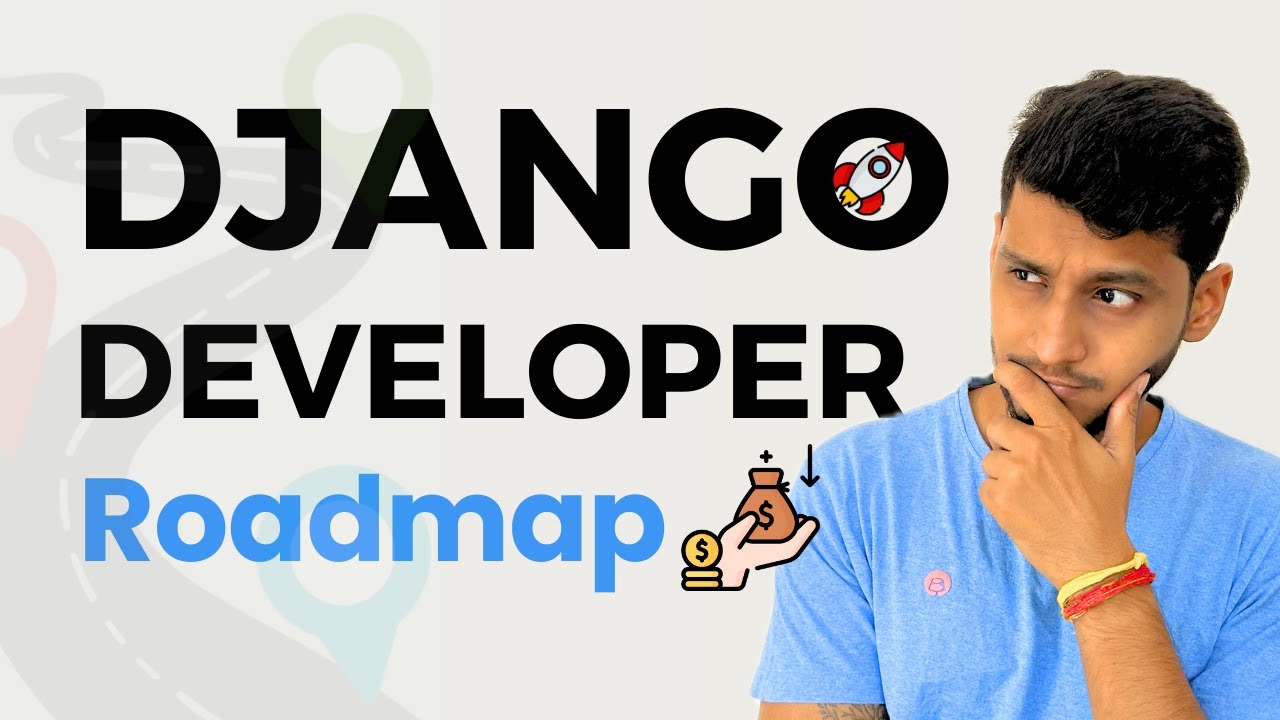Django vs Django REST Framework: Which One Should You Use in 2024? 🚀
Summary
TLDRIn this video, the speaker explains the key differences between Django and Django Rest Framework (DRF). Django is a full-stack web framework handling both the backend and UI, while DRF focuses solely on backend API development. The speaker highlights the need for DRF when building APIs, particularly for mobile apps, where Django’s traditional UI rendering doesn’t work. DRF simplifies complex tasks like data serialization, authentication, and pagination, making it an essential tool for modern web and mobile app development. The video also promotes a comprehensive course for learning Django and DRF in-depth.
Takeaways
- 😀 Django is a full-stack web framework that handles UI, logic, and database operations, allowing developers to build complete web applications.
- 😀 Django Rest Framework (DRF) is a specialized framework for building APIs, focusing only on the backend API endpoints and not handling the UI part.
- 😀 While Django is a full-stack framework, DRF simplifies building APIs by providing built-in features like authentication, serialization, and pagination.
- 😀 To integrate mobile apps with web services, a REST API is essential because mobile apps require data in JSON format, unlike web pages that render HTML.
- 😀 A REST API (Representational State Transfer API) allows communication between different client platforms, like web and mobile, using data in a lightweight format like JSON.
- 😀 Django can handle API creation, but DRF makes the process faster and easier by providing pre-built solutions like token-based authentication, pagination, and more.
- 😀 DRF helps in building APIs more efficiently by using classes like ModelViewSet, which reduces boilerplate code and simplifies CRUD operations in just a few lines.
- 😀 Django’s native features are geared toward full-stack development, so DRF was created to meet the specific needs of API development with Django.
- 😀 DRF includes advanced features like authentication mechanisms (token authentication, JWT), serialization, and other utilities that Django lacks by default for API development.
- 😀 A course on Django and DRF is available to help developers become proficient in full-stack development, including advanced Django features like Docker, RabbitMQ, and web scraping.
Q & A
What is the primary difference between Django and Django REST Framework (DRF)?
-Django is a full-stack web framework that handles both backend logic and frontend rendering (HTML). In contrast, Django REST Framework (DRF) is specifically designed to build APIs, focusing on the backend and API endpoints, while frontend rendering is handled separately using tools like React or Angular.
Why is Django considered a full-stack web framework?
-Django is considered a full-stack framework because it handles all parts of a web application, including the server-side logic, UI rendering through HTML templates, and database interactions, providing a complete solution for both backend and frontend development.
What role does Django REST Framework (DRF) play in API development?
-DRF simplifies the process of building APIs by providing tools to handle common API functionalities like serialization (converting data to JSON), token authentication, pagination, and other backend-related features, making it easier to build RESTful APIs without manually coding these aspects.
Can Django alone be used to build APIs?
-Yes, Django can be used to build APIs, but it lacks built-in tools for common API tasks like JSON serialization, authentication, and pagination. Django REST Framework is preferred because it includes these features out-of-the-box, saving time and effort.
Why is token authentication important in DRF?
-Token authentication is essential in DRF because it provides a secure way to authenticate users and ensure that only authorized individuals can access the API. DRF has built-in support for token-based authentication, which is necessary for modern applications, especially in mobile and web environments.
What are serializers in Django REST Framework (DRF)?
-Serializers in DRF are used to convert complex data types, such as Django query sets, into JSON format for API responses. They also handle the reverse process, converting JSON data back into Python data structures when the API receives requests.
What is the significance of ModelViewSets in DRF?
-ModelViewSets in DRF significantly simplify CRUD operations. They automatically generate views for performing Create, Read, Update, and Delete operations on a model. With minimal code, developers can manage data and handle requests efficiently.
What is pagination, and why is it important in API development?
-Pagination is a technique used to limit the amount of data returned by an API in a single response. It's important because it helps manage large datasets, improving performance and ensuring that API responses are not too large, which could slow down the application or overwhelm the client.
What does 'batteries included' mean in the context of Django?
-'Batteries included' in Django refers to the framework's philosophy of providing a wide array of built-in features to make web development easier, such as authentication, database handling, form handling, and more, so developers don’t need to build these features from scratch.
How does DRF handle the issue of authentication differently from Django?
-While Django provides basic authentication mechanisms, DRF includes advanced authentication features like token-based authentication and JWT (JSON Web Token), which are specifically designed for API-based applications, ensuring secure and scalable user authentication.
Outlines

This section is available to paid users only. Please upgrade to access this part.
Upgrade NowMindmap

This section is available to paid users only. Please upgrade to access this part.
Upgrade NowKeywords

This section is available to paid users only. Please upgrade to access this part.
Upgrade NowHighlights

This section is available to paid users only. Please upgrade to access this part.
Upgrade NowTranscripts

This section is available to paid users only. Please upgrade to access this part.
Upgrade NowBrowse More Related Video

Build an API with Django // Part 1 - What is an API?

Django Rest Framework and How to Install Uninstall Django Rest Framework (Hindi)

Python Django Explained In 8 Minutes

Laravel vs Django - What to choose and why?

Django 4.2 LTS - Alasan saya memilih Django Web Framework!

🤔 High-Salary Job with this Django Roadmap? | Advanced Django Developer roadmap || Code with SJ
5.0 / 5 (0 votes)